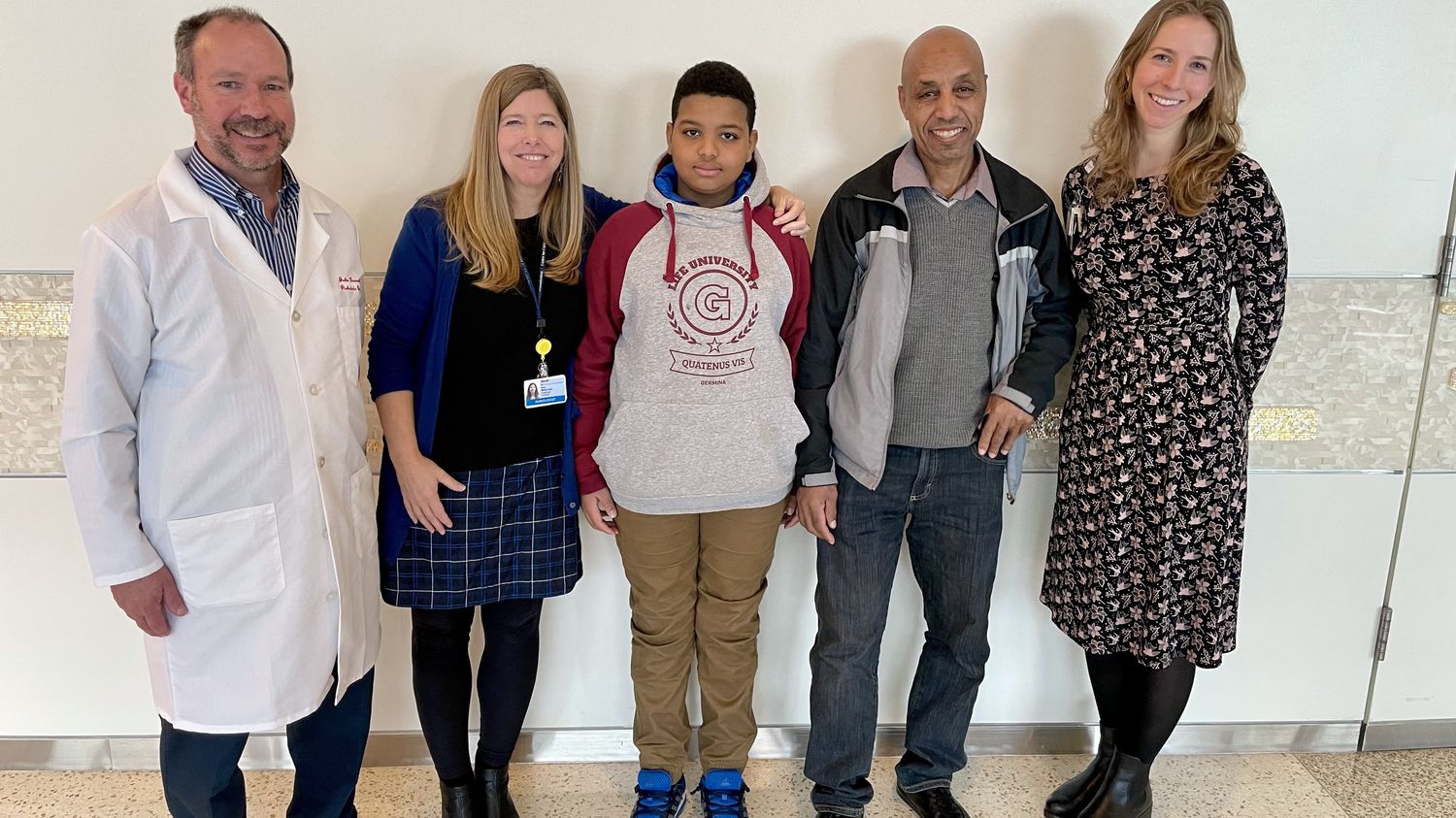For the first time, an 11-year-old child who suffered from congenital deafness was able to “hear” after gene therapy. The miracle took place in a hospital in Philadelphia, USA.
Published
Update
Reading time: 3 min

Aissam Dam, 11, suffered from profound congenital deafness, like nearly 20 million children around the world. In his case, the cause is a rare mutation in the otoferlin gene, which is involved in transforming sound vibrations into chemical information intended for the brain. This mutation only affects 200,000 people and therefore made Aissam relatively valuable for research.
This child was treated using gene therapy, the Children’s Hospital of Philadelphia, in the United States, announced on January 23, 2024. This technique which allows you to work in a target cell directly at the gene level, either by modifying it, or by importing a copy of a functional gene, to replace the one causing the problem. The operation took place this fall and the encouraging results of the intervention were communicated at the end of January 2024.
Currently, 150 different genes can cause hearing loss in children. Since the discovery of the otoferlin gene in 1999, the Pasteur Institute has been carrying out research and even managed to restore hearing to a mouse in 2019. But it was in a Philadelphia hospital that this research was carried out for the first time. are successful for a human patient.
From now on, the noise he prefers is that of “people”
The child, born in Morocco, was unable to learn sign language because he grew up in a poor environment, without school. So he invented his own language until his parents emigrated to Barcelona three years ago. There, Aissam learned sign language and a doctor talked about gene therapy, explaining to parents that their child was eligible for a clinical trial in the United States. His father therefore accompanied him to Philadelphia, at the expense of the laboratory working on this therapy. They spent several months there and the child was treated on October 4, 2023. He tells the New York Times that the noise scared him at first but now, “there is no sound” that he doesn’t like, even scissors or an elevator. And what he prefers to hear, he says, are “people”.
Doctors weren’t sure the procedure would work. On paper, it’s quite simple: replace the problem gene with another. Obviously, the reality is much more complex and that is why it took 20 years of research. As the mutated gene does not produce the protein that transmits sounds to the brain, it was necessary to inject a virus carrying a functional gene into a part of the ear, called the cochlea. Then we had to give it time to produce the necessary protein. And today, Aissam hears almost perfectly.
Other clinical trials around the world
This is a clinical trial, so we are still far from treating all patients suffering from this type of deafness. There are several reasons for this. First, remember, the New York Times, some deaf people believe that they do not need to be “cured” of anything. So should gene therapy research be given priority to this type of care rather than to more serious cases? Then, many children who are born with this type of deafness, at least in rich countries, receive an implant in the cochlea to help them hear sounds. But if this implant is placed, the gene therapy no longer works. Another problem, as in Aissam’s case, he may never be able to speak. Indeed, reports the New York Times, Around the age of five, the window for integration of spoken language in the brain closes.
In any case, other clinical trials are underway, in China, where four children were also treated, but also in France, where a program has just been launched, with the Pasteur Institute and the Necker hospital. .
